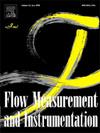Heat transfer analysis and experimental verification in flexible MEMS thermal films
IF 2.7
3区 工程技术
Q2 ENGINEERING, MECHANICAL
引用次数: 0
Abstract
Besides the convective heat transfer on the surface by a fluid, a considerable portion of the heat in a thermal film is lost to the sensor substrate and measured wall via heat conduction. Heat loss negatively impacts the frequency response and sensitivity of thermal films. To maximise the frequency response and sensitivity, the substrate material must be prioritised according to the frequency response criteria for screening. The effects of wind speed on the frequency response and of substrate thickness on sensitivity were investigated. First, a heat-transfer model was established, mathematical calculations were conducted, and materials with superior comprehensive performance were chosen as flexible substrates. Subsequently, FLUENT was used for three-dimensional simulations of the thermal film heat transfer. The results confirm the appropriate selection of the substrate in terms of heat transfer distribution. The effect of substrate thickness on the thermal film heat transfer was studied. Finally, wind tunnel experiments were conducted to verify the effect of wind speed on the response time and that of substrate thickness on sensitivity. Through mathematical calculations, simulations, and experiments, it was confirmed that wind speed has a positive effect on the frequency response, the substrate with lower thermal-conductivity and diffusivity is the optimal choice, and the substrate thickness has a positive effect on sensitivity. To measure fluid parameters such as the shear stress using the flexible MEMS thermal film, a thicker substrate was chosen as much as possible until it interfered with the fluid.
柔性MEMS热膜的传热分析与实验验证
除了流体在表面上的对流传热外,热膜中的相当一部分热量通过热传导损失到传感器基板和被测壁上。热损失对热膜的频率响应和灵敏度有负面影响。为了使频率响应和灵敏度最大化,必须根据频率响应标准对衬底材料进行优先筛选。研究了风速对频率响应的影响以及衬底厚度对灵敏度的影响。首先,建立传热模型,进行数学计算,选择综合性能较好的材料作为柔性衬底。随后,利用FLUENT对热膜传热进行三维模拟。结果表明,在传热分布方面,衬底的选择是合理的。研究了衬底厚度对热膜传热的影响。最后,通过风洞实验验证了风速对响应时间的影响以及衬底厚度对灵敏度的影响。通过数学计算、仿真和实验,证实风速对频率响应有正向影响,导热系数和扩散系数较低的衬底是最佳选择,衬底厚度对灵敏度有正向影响。为了使用柔性MEMS热膜测量流体参数,如剪切应力,尽可能选择较厚的衬底,直到它与流体干扰。
本文章由计算机程序翻译,如有差异,请以英文原文为准。
求助全文
约1分钟内获得全文
求助全文
来源期刊

Flow Measurement and Instrumentation
工程技术-工程:机械
CiteScore
4.30
自引率
13.60%
发文量
123
审稿时长
6 months
期刊介绍:
Flow Measurement and Instrumentation is dedicated to disseminating the latest research results on all aspects of flow measurement, in both closed conduits and open channels. The design of flow measurement systems involves a wide variety of multidisciplinary activities including modelling the flow sensor, the fluid flow and the sensor/fluid interactions through the use of computation techniques; the development of advanced transducer systems and their associated signal processing and the laboratory and field assessment of the overall system under ideal and disturbed conditions.
FMI is the essential forum for critical information exchange, and contributions are particularly encouraged in the following areas of interest:
Modelling: the application of mathematical and computational modelling to the interaction of fluid dynamics with flowmeters, including flowmeter behaviour, improved flowmeter design and installation problems. Application of CAD/CAE techniques to flowmeter modelling are eligible.
Design and development: the detailed design of the flowmeter head and/or signal processing aspects of novel flowmeters. Emphasis is given to papers identifying new sensor configurations, multisensor flow measurement systems, non-intrusive flow metering techniques and the application of microelectronic techniques in smart or intelligent systems.
Calibration techniques: including descriptions of new or existing calibration facilities and techniques, calibration data from different flowmeter types, and calibration intercomparison data from different laboratories.
Installation effect data: dealing with the effects of non-ideal flow conditions on flowmeters. Papers combining a theoretical understanding of flowmeter behaviour with experimental work are particularly welcome.
 求助内容:
求助内容: 应助结果提醒方式:
应助结果提醒方式:


